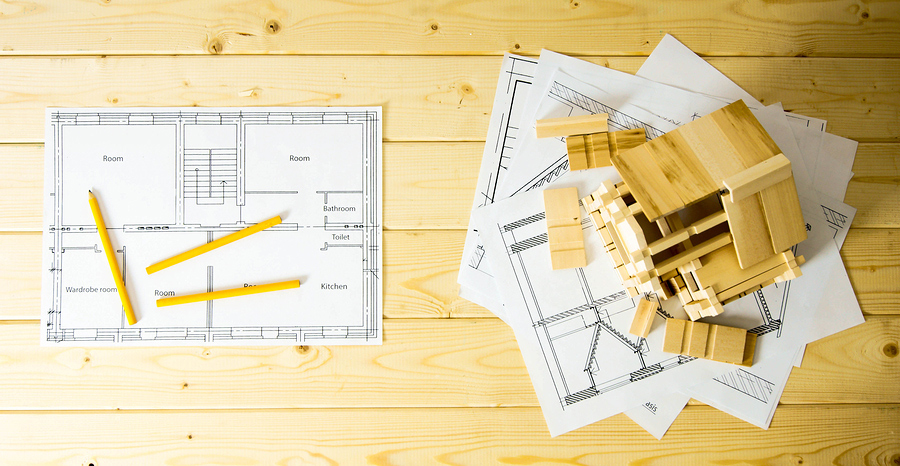Building a Home for Our Homestead
We are currently working on creating a homestead on our property in Florida. Amazingly, the biggest problem with this project hasn’t been money—it’s been people! People and their ideas can create the biggest problems… and the best solutions.
When I start working on a project, I get very definite ideas about what I want to do. I spend hours looking at different possibilities for each aspect of the plan and then decide on the ones that best fit the overall purpose.
Deciding on the Right Style of House
When I started considering the house we were going to build, I went through plans for log cabins, tiny homes, books about the most efficient use of space, and anything else I could find that would give me ideas. I finally settled on a style of home that would be energy efficient and cost effective.
I contacted the company to find out the exact cost and any options we needed to consider. At that time, they were doing the first house in Florida for their company. My husband and I arranged to meet the owner and get her take on the company and their methods. She was very pleased with everything they had done, which made us feel that we had made a good choice.
I recruited a fellow permaculturist to help with the project, so that we could minimize inputs and maximize outputs. I started researching composting toilets, kitchen and bathroom cabinets, water heaters, solar power, wind turbines, hemp construction, and anything else on the internet that would be useful in the design of the new house.
Read more: Homestead Upcycling – How to Profit from Waste Streams
Sometimes People Can Be the Problem
Then I started talking with other people: engineers, contractors, distributors and the government.

Contractors, on the other hand, often have their own ideas about what works and what doesn’t. They aren’t always willing to try something new, or at least new for them. One of the problems that the other owner told us about her build was that the general contractor she used definitely thought he knew about buildings. In the process of putting up her house, she spent 4X the cost of the shell to get the rest of the house done, and it wasn’t even completed when we visited her. I was determined not to let that happen to our project!
Trying to Keep it Local
Another suggestion that I got from the engineers was using local people. The logic behind this is that they are most familiar with the county regulators, building inspectors, and code enforcers. Every county has its own views on what is acceptable and what isn’t no matter what the state building code says, so working with people who already know them gives you a distinct advantage.
I interviewed subcontractors in the county where our property is located to find a few that were not adverse to my ideas about composting toilets, no A/C, and backup energy systems. Then I got bids from at least three in each specialty, where possible. I have had to follow up with them repeatedly to get a written proposal that lists their license number and insurance, but it is valuable documentation before deciding who gets the job.
Distributors are very helpful as long as you are buying their product. Solar installers may not like propane solutions and you have to be diplomatic about talking with distributors of various products if you want to get their help.
And Last But Not Least
Then there’s the government! The only solution for them is more communication. Where possible, I ask my subcontractors and other professionals to scope out the situation with the government officials ahead of time. Then I know what may fly and what is going to be DOA. Still you have to be willing to jump through a few hoops to get your project approved, if it is even a little bit out of the ordinary!
Karen the Newbie Homesteader is a novice gardener, homesteader, and permaculturist. She and her husband recently purchased four acres in central Florida to create their homestead and grow their own food. She will be sharing their adventures: successes, failures, and everything in between – here at The Grow Network.









COMMENTS(3)
Hi Karen,
I live in Putnam County on 3 acres that i am trying to homestead. I just retired in January of this year from St. Johns County as a building inspector. I also built my own home which is not 100% complete yet. So I can feel your pain. I am excited for you and your family as you embark on this mission. I would like to help if I could but don’t have any way of contacting you. You can contact me by e-mail at ralphlohman (the at symbol goes here) att (the little dot goes here) net
What resources did you start out with to get the Permaculture design and layout. What are the things most important to look for in design? Thank you for sharing your experience.
I took the Permaculture Design Course here in Florida and used that information to create a general plan for our property.
The first things you have to consider are 1) what you plan to do, 2) the environment you will be living in, and 3) how much space you will need for the stuff you want to keep (this is the hardest one).